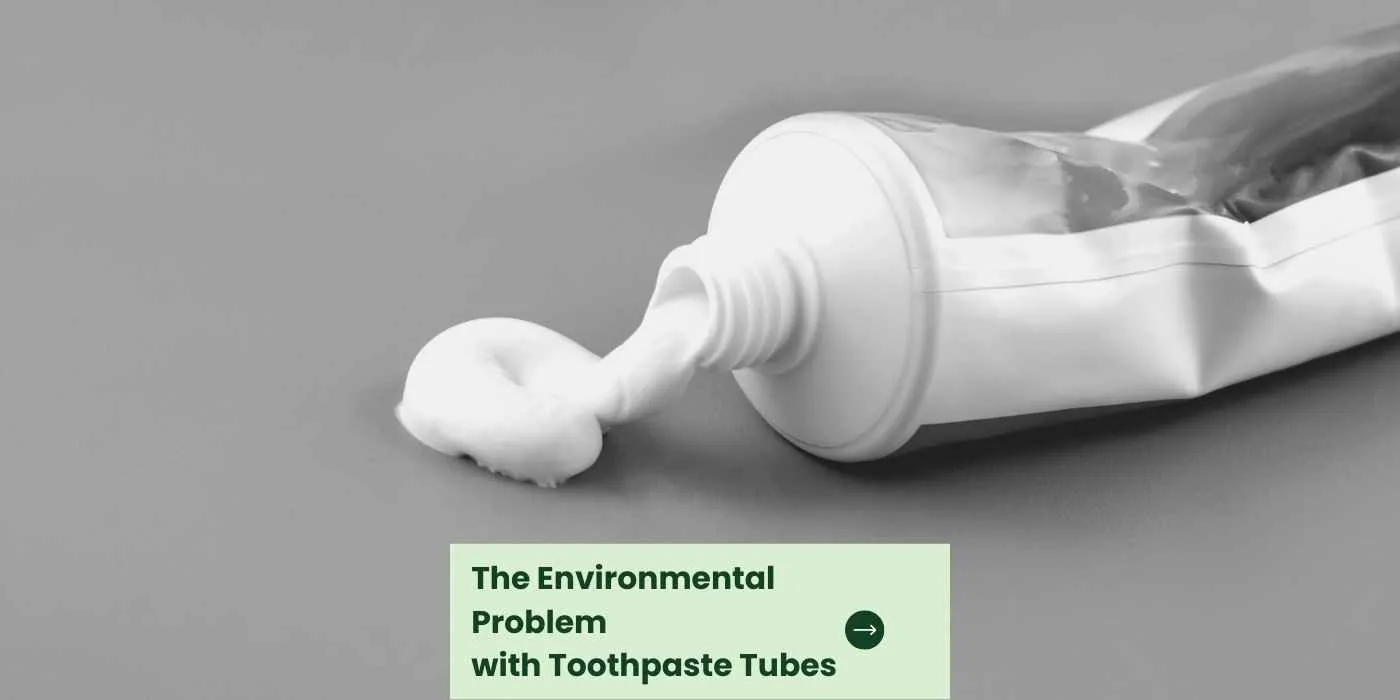Have you ever considered the environmental impact of your toothpaste tube? This seemingly innocuous household item is a bigger player in environmental issues than most of us realize. Traditional toothpaste tubes, often made of a fusion of plastics and aluminum, pose a significant challenge for recycling processes. The complexity of their materials makes them difficult to break down, leading to a troubling accumulation in landfills.
In the context of increasing global awareness about plastic pollution and waste management, the toothpaste tube emerges as a symbol of everyday consumer choices with far-reaching ecological consequences.
Are you ready to squeeze out every drop of knowledge on this pressing issue? Let’s dive in and explore how the world is rethinking toothpaste tubes for a greener future.
Key Takeaways: Problem with Toothpaste Tubes
- Environmental Impact is Significant: Toothpaste tubes often contribute to plastic waste. Most toothpaste tubes are made from a combination of plastics that are not easily recyclable, leading to environmental concerns.
- Difficult to Fully Utilize: Getting every last bit out is challenging. The design of traditional toothpaste tubes makes it hard to extract all the product, often resulting in waste.
- Potential Health Concerns: Certain materials can raise health questions. Some toothpaste tubes may contain BPA or other potentially harmful chemicals, which can be a concern for health-conscious consumers.
- Limited Accessibility Features: They are not always user-friendly for all. The standard design of toothpaste tubes can be difficult to handle, particularly for people with limited dexterity or strength.
- Packaging Costs Affect Pricing: Toothpaste tubes contribute to the overall cost. The production and materials used for these tubes can impact the final price of the toothpaste.
- Consumer Habits Influence Waste: How consumers use tubes impacts waste levels. Consumer practices like squeezing from the middle instead of the end can lead to quicker depletion and more waste.
- Regulatory Standards Vary: There is a lack of uniform standards. Different countries and regions may have varying regulations regarding the materials and recyclability of toothpaste tubes, complicating global initiatives for improvement.
Why toothpaste tubes are bad for the environment?
The main problem with toothpaste tubes is the packaging that it comes in. The tube that the toothpaste is stored in is made of plastic.
This plastic can’t be recycled and is often tossed into landfills.
They never break down, ever! They are also super inefficient, have you actually ever managed to squeeze that last bit of paste out of the bottom?
Is a toothpaste tube recyclable?
The answer is no. Toothpaste tubes are not recyclable because the plastic in them can’t be recycled with other plastics. The tube itself contains a thin layer of aluminium foil to cover up the product and prevent it from drying out, which also means that both materials can’t go into recycling plants together.
To make matters worse, toothpaste tubes are often thrown away in a trash can, which means that they aren’t being recycled at all.
The problem is compounded by the toothpaste tube’s shape and size – it’s not easy to recycle them because of their design. Recycling plant employees have to take each tube apart before recycling them, which takes up time and costs money.
How to reduce waste from toothpaste tubes and save the environment:
The first step in reducing your environmental impact is by choosing recycled materials. Most companies will make their plastic containers out of recyclable material, so look for those when you are purchasing a tube of toothpaste. But be aware, this is not the best option.
One of the easiest ways to reduce waste from toothpaste tubes is by using a refillable container for your toothpaste that you can put in the shower or on your counter.
These containers come with their own separate caps and when they are empty, rinse them out and fill them up again! Again, not the easiest option unless you are making your own toothpaste (go you!)
The future of toothpaste
So what can you do? Switch to either toothpaste in a glass jar or toothpaste tablets. You’re probably thinking of toothpaste tablets? Eh?
But if you think back to washing powder, not long ago we were used to lugging big boxes of detergent home. Now we can opt to buy small tablets in a box with a greatly reduced carbon footprint.
Toothpaste tablets are the same concept, just taking the paste and turning it into tab form, with biodegradable packaging so a win: win all around. We just have to get used to using tabs rather than paste!
It’s never too late to start thinking about our impact on the environment. The simplest way you can reduce your environmental footprint is by switching from a toothpaste tube to either toothpaste in a glass jar or toothpaste tablets.
While these options might seem unfamiliar at first, they are actually much more efficient and won’t end up sitting in landfills for years as tubes do! So why not give them a try? Your mouth and your great great great great grandchildren will thank you!





